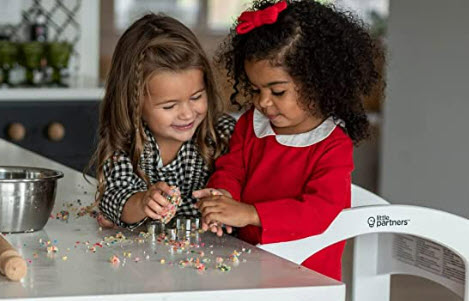The Academy Training Components
To provide more experiential learning and collaborative field support following training, the following components will be included in the updated curriculum and training structure.
Components of The Academy
Critical reasoning tools will be used during simulations, in specialty track workshops, and in the field. These tools will improve decision making and bond all workers across the system of care. Simulations and virtual reality will offer trainees a realistic experience, and the MyAlign platform will assist workers in addressing their overall well-being.
Critical Reasoning Tools
Uses a critical reasoning method for training using a blend of Herbert Simon’s work, classical theory, emotional intelligence, forensic science, and experiential learning theories.
Simulation
Simulation is more than mere role play. Live performers (Sim Players TM) interact with trainees to accurately portray situations based on actual case scenarios.
Virtual Reality
This immersive learning resource is designed to accelerate the pace of learning, enhance a child welfare professional’s scope of awareness, and family engagement skills.
MyALIGN
This customized digital platform for the child welfare professional aims to provide support, resources, a networking and coaching community, and data on worker well-being.

Critical Reasoning Tools
REAL Academy (RA) created a critical reasoning method for child welfare training. The method carefully blends Herbert Simon’s work, classical theory, emotional intelligence, forensic science, and experiential
learning theories. Marino and Wright (2022) crafted a new theory and practice through the above mentioned theories, Administrative Tethering, which focuses on relational bonds to operationalize principles and techniques found in RA’s training.
RA created three tools that assist any child welfare professional in managing the case information and remaining objective through building stronger bonds with policy and law, and reinforcing groupthink to ensure the best decision is made in a particular case. The Behavior Branch,™ Good Call Tool,™ and Nexus™ all work together to guide and map any decision point in a child welfare case. Together, these tools help with:
- Safer decisions for children
- Quicker recognition of a bias challenging the decision
- Efficiencies in our documentation
- Saving supervisor’s time
- Administrative Tethering (AT) (the golden thread throughout the training and education methods)- strengthens bonds to the child welfare profession, organization, system, policy, law, and families
- AT measures identify specific bonding areas requiring attention
RA’s critical reasoning training (including the experiential/simulation) targets low bonding areas connected to trust, value, accountability, and motivation. RA’s critical reasoning, simulation training methods, and AT strategies are proven to strengthen relationships child welfare professionals have with the mission of the work, their home organizations, and the families and children they serve.
"As a trainer, these tools are amazingly simple and will be instrumental in building critical thinking in the workforce. I was impressed with how the Good Call Tool becomes a map of that decision in time. The Nexus is going to help Child Protective Investigators with court testimony."
- TRAINING PARTICIPANT
"These tools will not only improve critical thinking, but they will help slow the Child Protective Investigators and supervisors down to review policy more often. I see strong benefits in statewide use of the Good Call Tool and Nexus to help map decisions and fact patterns because we will be able to target strengths and weaknesses in our decision making."
- TRAINING PARTICIPANT
Simulation
Simulation is more than mere role play. Live performers (Sim PlayersTM) interact with trainees to accurately portray situations based on actual case scenarios. The live performers are trained to stay steadfast in the role as written from the true-to-life case. The simulation environment can be any place, such as a home, a rented hotel room, and even a tent in a parking lot. The simulations are modulated in small sequential micro-bursts to allow time to prepare trainees, demonstrate their skills in the module, and receive direct and objective feedback from the training coaches. Due to the nature of reality, simulation aids in gaining a full understanding of what the trainee will encounter in the field. Moreover, it is an opportunity to slow the trainee down to process the situation, learn breathing techniques, and think critically.

"I’m excited about infusing professional actors/actresses into real life scenarios that will engage the learner through all of their senses. Critical thinking skills will be increased in a safe space that will allow the learner to build competence and confidence in a conducive learning environment."
- TRAINING PARTICIPANT

Virtual Reality
Accenture Virtual Experience Solution (AVEnueS) is an immersive learning resource designed to accelerate the pace of learning, enhance a professional’s scope of awareness, and help create a foundation for enhancing the ability to make more effective decisions. The Florida Institute for Child Welfare is supporting the statewide implementation of VR through the procurement of VR training, software, equipment.
MyALIGN
MyALIGN was developed with input from DCF leadership, community based care lead agency representatives, case management agency representatives, and other child welfare stakeholders. MyALIGN is a customized digital platform being developed by the Florida Institute for Child Welfare's GROW Center for the child welfare professional that aims to provide support by leveraging technology to create streamlined access to resources, establish a networking and coaching community, and provide real-time data on the well-being of child welfare professionals.
Phase 1 of the MyALIGN initiative is designed to complement the newly redesigned pre-service learner journey. This phase focuses on providing direct support in the form of resources, well-being monitoring, coaching, and networking to newly onboarded Child Protective Investigators and Case Managers in their first year with the agency or organization.
"I am looking forward to training new staff with exciting and new innovations to better equip them with tools and experiences for success."
- TRAINING PARTICIPANT

What is Need to Implement These Components
Learner Journeys
In The Academy, every child welfare professional has an important role in the developing and sustaining a collaborative, connected workforce comprised of confident and competent workers.
I have the skills and support that I need to assist with their continued professional development.


